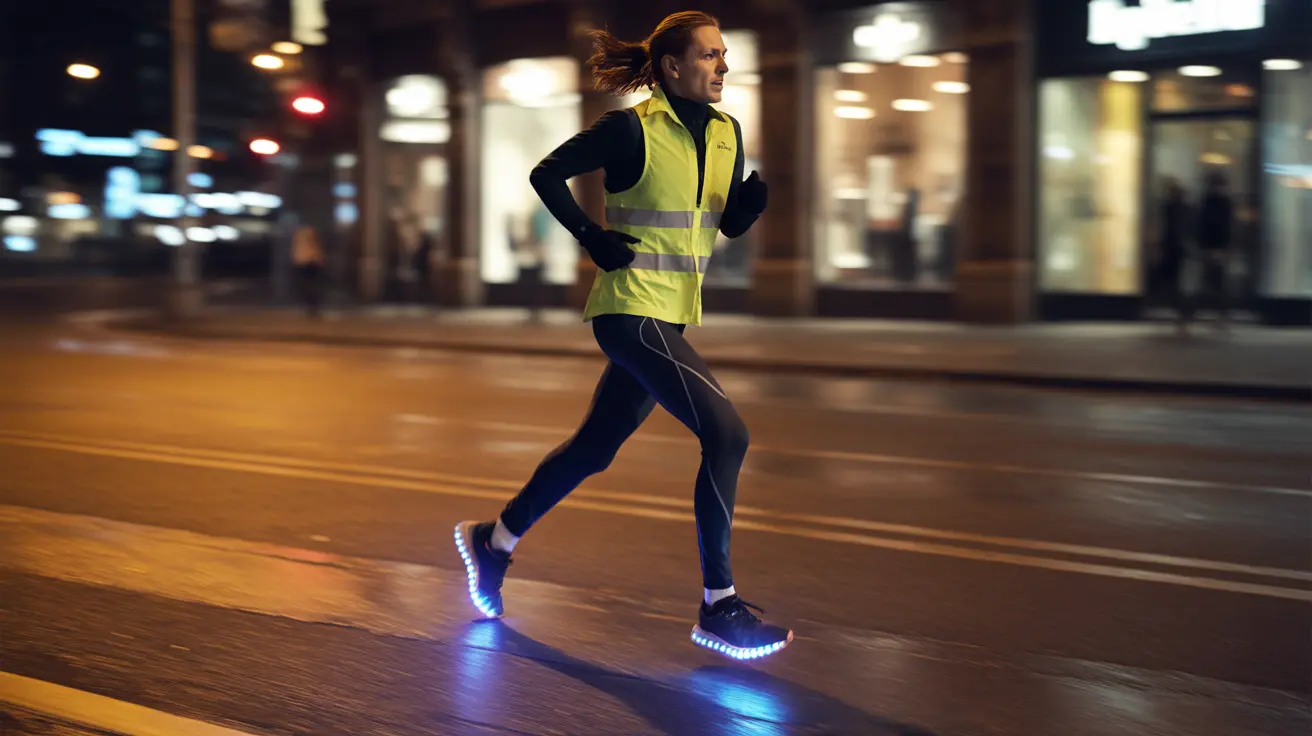Running at night can be an exhilarating and practical way to maintain your fitness routine, especially when daylight hours are limited or your schedule only allows for evening workouts. However, running in darkness requires careful preparation and awareness to ensure your safety and enjoyment.
This comprehensive guide will explore essential safety measures, visibility techniques, and gear recommendations to help you make the most of your nighttime running adventures while minimizing potential risks.
Essential Safety Equipment for Night Running
The right equipment can significantly enhance your safety when running at night. Start with these fundamental items:
- Reflective vest or running jacket with 360-degree visibility
- LED running lights (front and back)
- Reflective arm or ankle bands
- High-visibility running shoes or shoe clips
- Headlamp or chest light for path illumination
Choosing Safe Running Routes After Dark
Selecting appropriate routes is crucial for nighttime running safety. Focus on these characteristics when planning your route:
- Well-lit streets and paths
- Populated areas with regular foot traffic
- Wide sidewalks or dedicated running paths
- Areas with multiple access points
- Routes familiar to you from daytime runs
Avoid isolated trails, poorly lit neighborhoods, and areas with known safety concerns. Consider running with a group or partner for additional security.
Visibility Enhancement Strategies
Making yourself visible to others is paramount when running at night. Implement these visibility-boosting techniques:
- Wear light-colored or white clothing as a base layer
- Add multiple reflective elements to your running outfit
- Position lights at different heights on your body
- Choose gear with contrasting colors and reflective patterns
- Consider using blinking lights to draw attention
Night Running Best Practices
Follow these essential guidelines to maximize safety during your nighttime runs:
- Run against traffic to see approaching vehicles
- Carry identification and emergency contact information
- Keep music volume low or use one earbud to maintain environmental awareness
- Bring your phone for emergencies
- Share your running route with a friend or family member
- Stay alert and aware of your surroundings
Weather Considerations for Night Running
Weather conditions can significantly impact nighttime running safety. Take these factors into account:
- Check weather forecasts before heading out
- Wear appropriate layers for temperature regulation
- Use extra caution in wet or icy conditions
- Consider indoor alternatives during severe weather
- Adjust your pace according to visibility conditions
Frequently Asked Questions
What are some effective safety measures to take when running at night?
Always wear reflective gear, run in well-lit areas, carry identification, and let someone know your route and expected return time. Running with a partner or group can provide additional safety.
How can I improve visibility while running in the dark?
Wear multiple forms of reflective gear, use LED lights on both front and back, choose light-colored clothing, and utilize a headlamp or chest light to illuminate your path.
What are the best routes to choose for safe nighttime running?
Select well-lit, populated areas with good sidewalks or running paths. Stick to familiar routes and avoid isolated or poorly lit areas. Consider routes with multiple access points and regular foot traffic.
Can running at night increase my risk of injury or accidents?
Yes, reduced visibility can increase risk, but proper preparation, appropriate gear, and following safety guidelines can significantly minimize these risks.
What type of reflective gear is most effective for nighttime runners to stay visible?
A combination of reflective vest, LED lights, and reflective bands or strips positioned at different heights on your body provides the most effective visibility. Multiple light sources and 360-degree reflection are key.
Remember, while running at night presents unique challenges, it can be done safely and effectively with proper preparation and attention to safety measures. Always prioritize visibility and awareness to ensure an enjoyable nighttime running experience.




